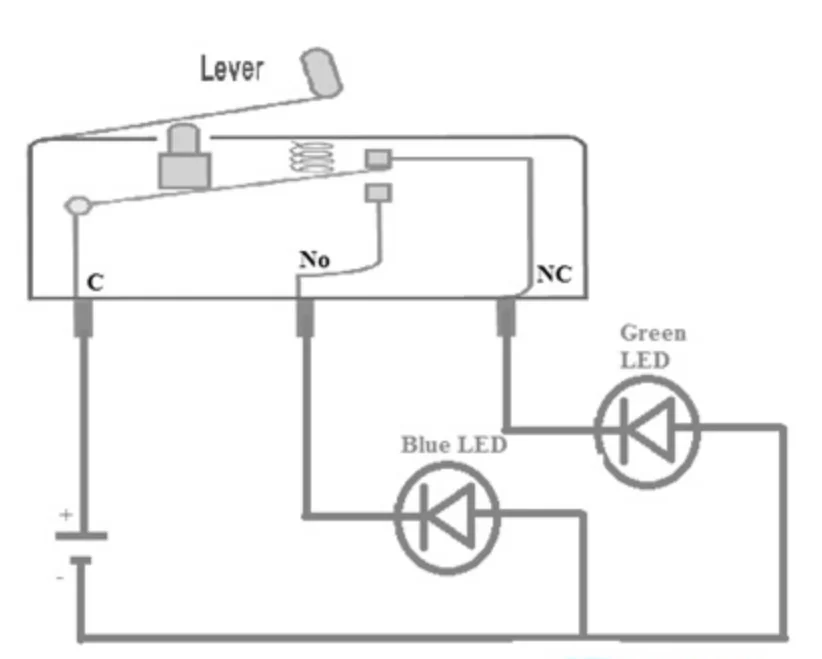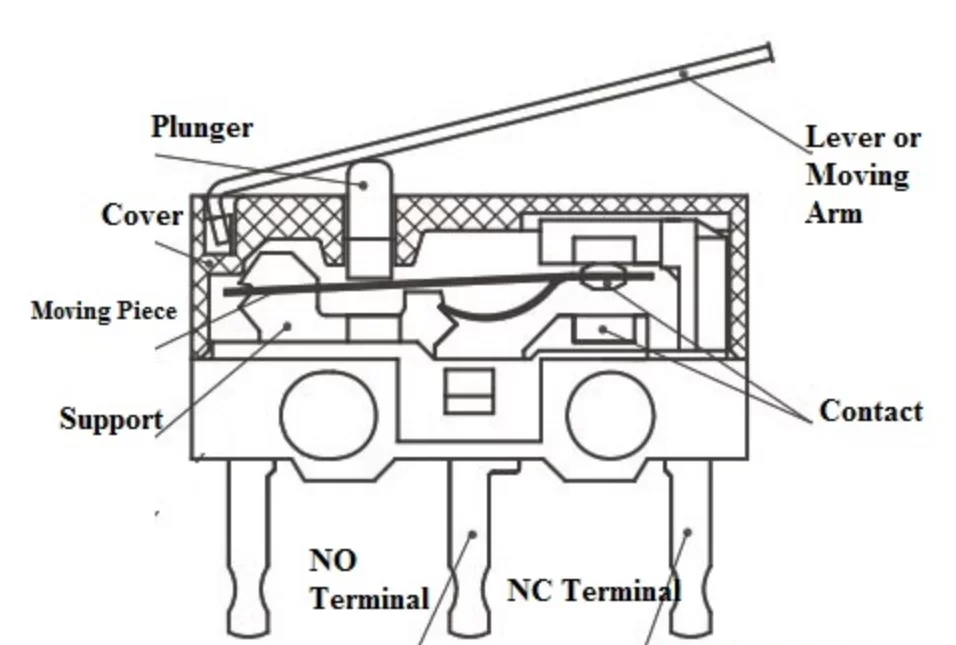What Is a Micro Switch?
A micro switch, often referred to as a miniature snap-action switch, is a compact electrical switch that is widely utilized for its swift activation and high reliability in controlling electrical circuits. This switch functions by employing a small actuator, which translates minimal physical force into a significant movement at the contacts, snapping into place rapidly regardless of actuation speed. Micro switches are distinguished by their audible click when triggered and are commonly found in home appliances, industrial equipment, and vehicles due to their long-lasting design.
How Does a Micro Switch Work?
- Actuation: When pressure is applied to the micro switch‘s actuator, it imposes force onto a moving contact.
- Tipping-Point Mechanism: The force exerted triggers a spring-tensioned lever to pivot. Once this lever surpasses a critical movement threshold, it flips abruptly to an alternate position.
- Contact Transition: This rapid motion instantaneously changes the state of the electrical contacts, either completing (making) or interrupting (breaking) a circuit. These contacts are typically crafted from conductive metals like copper or silver alloys.
- Hysteresis: The micro switch’s construction provides a distinct separation between activation and deactivation points, ensuring a clear on-off status.
- Reset: The lever reverts to its default state by the spring’s action once the actuator pressure is released, realigning the contacts to their original position (normally open or normally closed).
Micro switches boast exceptional longevity and are favored for their definitive switching capabilities.
Micro Switch Circuit:
- Lever: This is the micro switch’s actuator, triggering the switch upon being pressed.
- C (Common): This is the pivotal terminal that alternates between connecting with the NO or NC terminals based on the lever’s stance.
- NO (Normally Open): In the lever’s idle state, this terminal remains disconnected from common. Depressing the lever establishes a connection, enabling current flow.
- NC (Normally Closed): With the lever unpressed, this terminal maintains contact with common, permitting current passage. Pressing the lever severs this connection.
- LEDs: The circuit includes two LEDs—one blue and one green. Under normal conditions (lever untouched), the green LED illuminates due to the active connection between NC and C. When the lever is engaged, the switch favors NO, lighting up the blue LED in turn.

Micro switches are adept at initiating or halting electric circuits in various settings, often serving as crucial control points or safety mechanisms.




